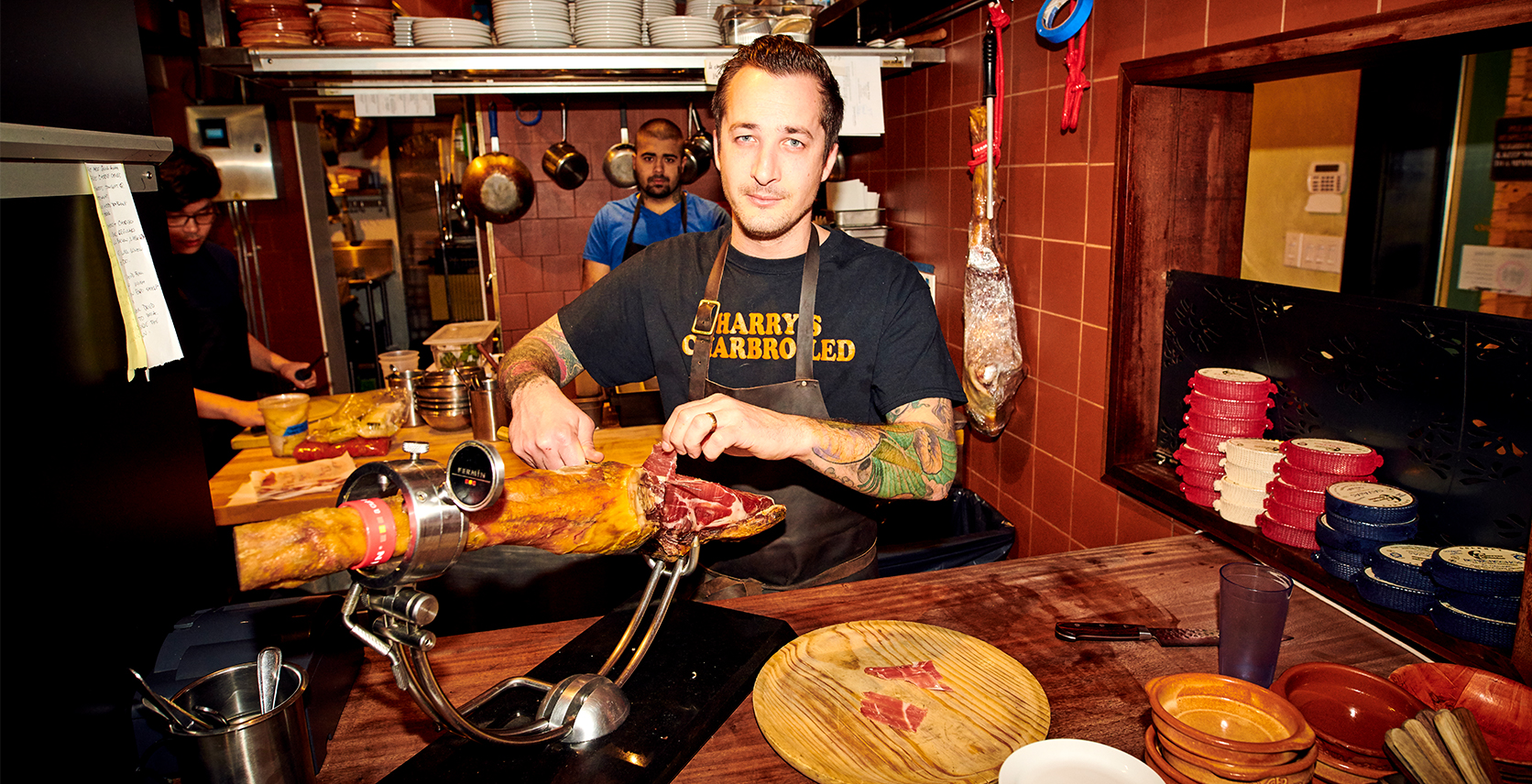How Grant van Gameren Conquered Toronto’s Food Scene — and Can’t Slow Down
Grant van Gameren is afraid he’s going to die. Not in ten, or 20, or 30 years. He’s afraid he’s going to die, like, now. “I got a million ideas — I can’t keep up with them,” he says. “It’s kind of like I’m teetering on a heart attack every single day.” If Toronto’s restaurant scene is a castle, van Gameren is easily its king. He’s a 36-year-old who seems to have the Midas touch when it comes to anticipating and executing what Toronto wants to eat, and how. Ten years ago, he burst onto the city’s food scene as the agent provocateur of charcuterie at The Black Hoof. There, he served up horse-tartare sandwiches, rabbit rillettes, and platters of boar salami, pancetta, and bresaola to customers who waited — in hour-long lines snaking out the door — to eat meat in ways they didn’t even know it could be made. Once his partnership with co-owner Jen Agg imploded, he opened Bar Isabel, a Spanish tapas spot full of old-world charm, loud laughter, delightfully mismatched floor tiles and pendant lamps, and — of course — wildly creative dishes ranging from the signature grilled octopus to devilled duck eggs topped with discs of blood sausage. People lined up for that too. After Isabel came Bar Raval, another joint that showcased van Gameren’s luxurious, indulgent design sense and his skill as a chef. One reviewer called Raval’s dishes “obnoxiously delicious.” If I was a betting woman, I’d bet on this guy.
Every single place he’s opened has been a success — an unlikely streak for an owner of independent restaurants, more than half of which typically close in their first operating year. He owns six now, speckled across Toronto’s west end. On balance, his life looks pretty good. He employs 300 people. He’s married to a brilliant and patient chef named Sunny Stone. He’s a new father, and lives with his family in a million-dollar home in the city’s Trinity Bellwoods neighbourhood. He just bought a second house on a sprawling estate two hours up the highway in Prince Edward County.
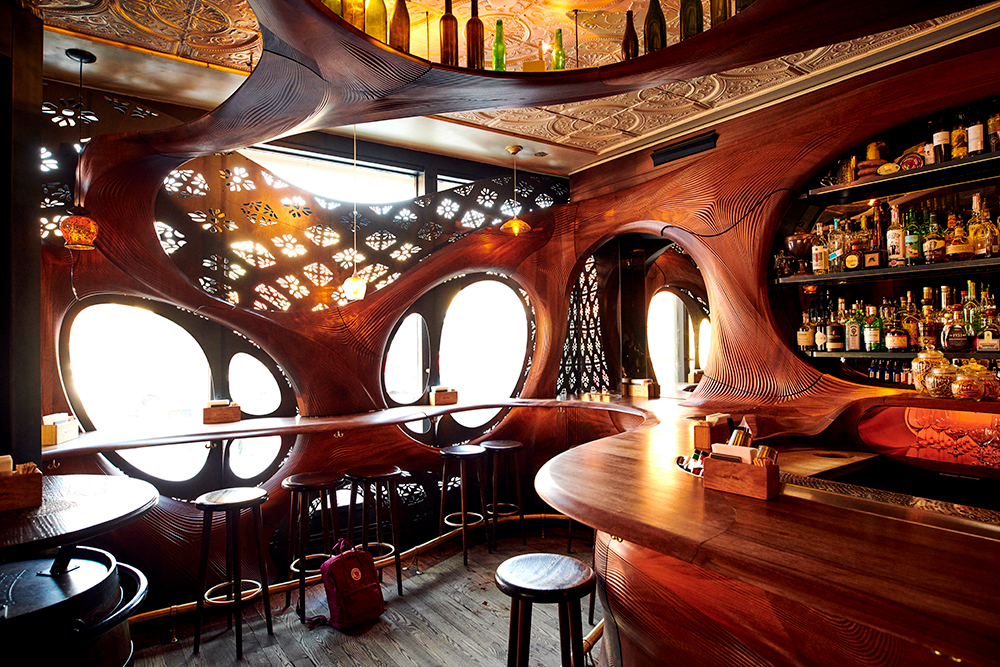
But scratch the surface a little and we’re back to the impending heart attack. It’s been a long year for van Gameren. He’s maxed out, financially and emotionally. He’s a million dollars in the hole. He survives most days on coffee and cigarettes, an unusual diet for one of the country’s best chefs. He’s never taken a vacation, and he’s starting to think it might be time. Running independent restaurants is always a precarious game, but feels especially so these days, in part because halfway is not a distance van Gameren goes. He is, unequivocally, a man on a mission — to do more, earn more, make more. He has two more restaurants scheduled to open this spring: Quetzal, a high-end Mexican eatery where everything on offer will be cooked over a 28-foot open fire, and Rosalinda, his first attempt at a vegan restaurant. His fledgling catering company, Victor Dries, will have launched officially, as will have Cressy House, his new Prince Edward County property. And yet, despite all of his success living out some kind of dream, he can’t shake the feeling that it all may be moving a little too fast.
•••
Van Gameren was never going to have just one restaurant. A homegrown Toronto kid, he has always done things furiously and well. He was raised in the city’s downtown by his father, after losing his mother to colon cancer when he was 11. A job in the kitchen at a Pizza Pizza turned into one at Il Fornello, which turned into one at Canoe. A hobby, breeding snakes, turned into 50 rare boa constrictors crammed into his apartment, which, once he sold them, turned into a down payment on a loft in Toronto’s west end. The Black Hoof, van Gameren’s first restaurant, started as a charcuterie experiment and cemented his reputation as a star chef with strong opinions and an even stronger vision. After he left the Hoof in 2011, he partnered with Pizzeria Libretto Group founder and owner Max Rimaldi to open Bar Isabel. Since then, he has added Bar Raval, a Spanish pintxo bar; Tennessee Tavern, an Eastern-European comfort food spot; burger joint Harry’s Charbroiled; Pretty Ugly cocktail bar; and El Rey, a mezcal bar. He’s almost entirely self-taught, save for the guidance he’s received from Rimaldi and the six months he spent in a three-year business program at George Brown College before he dropped out because he was frustrated with how little his classmates seemed to care.
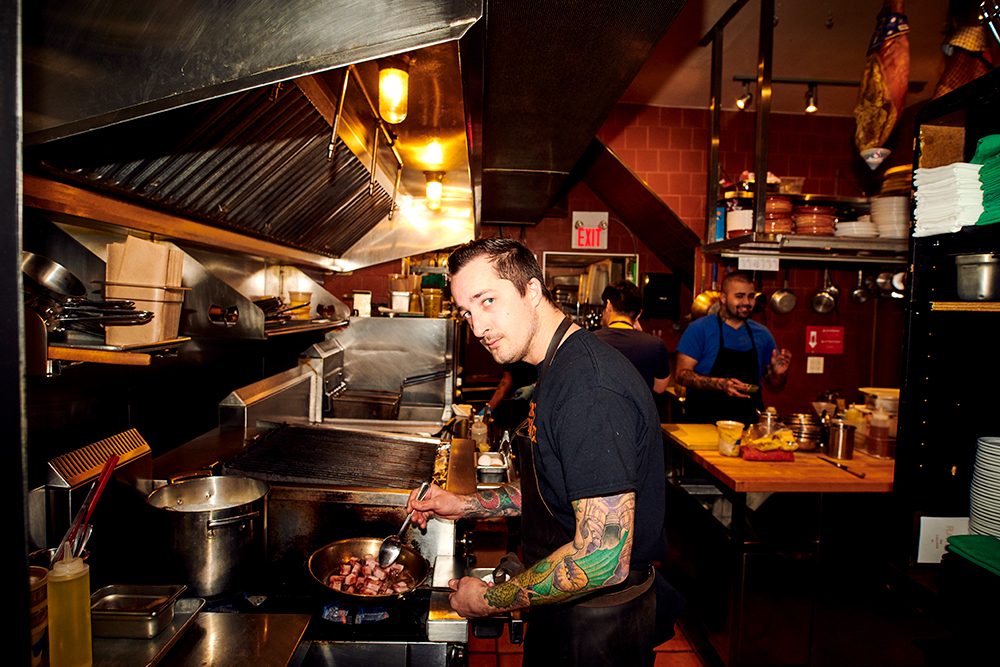
In part, it’s his exacting, obsessive eye for detail and a decade-long refusal to do it any way but his that turns his most noteworthy restaurants into inimitable pieces of art. He shipped 10,000 pounds of tile from Mexico to create the mismatched floor at Bar Isabel. The swoops of mahogany wood that dance around Bar Raval’s walls were built from a custom-created algorithm, and the bar taps were customized to fit the grips of the bartenders who’d be working them. And, when he hired a staining expert to create the counter at his Parkdale cocktail bar Pretty Ugly, the man wanted to do it in deep red. The gut that had so far guided van Gameren was telling him no. Sure enough, when he saw the bar for the first time, his stomach just didn’t feel quite right, he tells me, his narrow face cracking a satisfied smile. “I told him, we cannot do it. It looks stupid,” he says. He spent $200,000 and nearly burned a business relationship, but the stain guy re-did it in a dark, rusty brown and van Gameren’s stomach felt better.
“Every day you try to get to a new level. You’re at a point like, if you ever stop, you’re completely fucked.”
Today, he’s sitting at a long wooden table in the recently renovated headquarters of his company, Overbudget Inc. — a bright, airy office on the third floor of a building on Queen Street West. He’s two coffees deep and it’s snowing outside. Van Gameren HQ is hectic this morning. In the open kitchen, chefs Kate Chomyshyn and Julio Guajardo make a shrimp ceviche with melon-balled avocado, shallots, and a burnt-tortilla sauce for van Gameren to test, an example of the subtlety that has defined the cooking at all of his restaurants. Bottles of mezcal line the walls above the bar, which stands next to a cluster of leather chairs centred around a wood stove. The space is inarguably stunning, with its enormous windows, cascading plants, and abstract art. Not far from the wood stove sits the latest T magazine, Jay-Z on its cover — a hat-tip to van Gameren’s past life as a rapper. No detail is spared here either. Is the missing button on his yellow-and-black plaid shirt intentional, I wonder as I watch van Gameren kiss his eight month-old son Wylie van Stone on the nose. Even the toddler is decked out in a personalized bomber jacket that reads “van Stone” on the back and “Est. May 2017” on the arm.
Van Gameren won’t say how much money he makes, but he will say what he’s working towards — what’s on the far horizon line for him. When he talks about idols, he talks about Danny Meyer, proprietor of the Michelin-starred restaurants Gramercy Tavern and The Modern, founder of Eleven Madison Park, and restaurateur behind Shake Shack, a burger chain with 162 locations that is worth more than $4 billion. “I think we have a lot of the same standards and ideals,” he muses. He’s now interested in scalable food businesses that run on razor-thin labour with maximum output. What he’s really after is a billion-dollar idea that’ll give him back a little time.
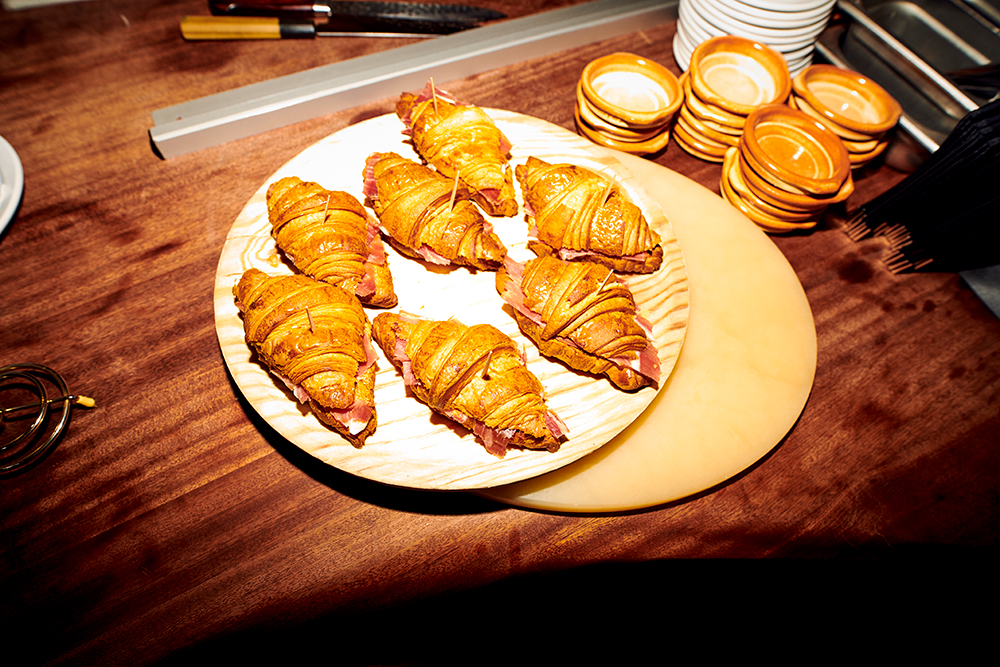
But van Gameren’s never done scalable before. The magic in his most successful restaurants is in their singularity, that they somehow both embody and defy novelty. He’s earned his crown the same way as so many others have whose careers have crested: by being extremely talented and incredibly lucky. And it’s unclear if the golden boy of Toronto’s restaurant scene can make the full transition to magnate and stay failure-free. It’s worth noting here that van Gameren, too, has a burger joint. Rumour has it he wants to build Harry’s Charbroiled out into a chain, though when asked he says he’s too busy to consider the idea just yet. “Do you ever walk into a place and think, wow, the world could use a thousand of these? I want to do that. I want someone to walk into one of my places and think, wow, this should be everywhere.” And then, hopefully, it will be, he says, as he leans back, propping his ski-sock-clad feet up on the table that looks way too sleek to be from Ikea, and yet.
•••
It might seem glamorous, a life as the poster child for Toronto’s newish wave of fine dining, where vibrant colours and carefully dimmed lights replace stuffy white tablecloths and stuffier service. But these days, van Gameren is spending far less time enjoying what he’s built and a lot more time “fixing broken shit,” he says. He’s evolved into more of a restaurateur than a chef, but still works shifts in Raval’s kitchen, plating the adventurous dishes (canned squid in ink, razor clams in mojo verde, adobo pork bocadillo) that exude the carefully crafted simplicity for which his cuisine is known. This same February morning, after checking in at the office, he maneuvers the steering wheel of his black Range Rover with one hand, baby Wylie in the back seat, as he texts one of his partners about a busted pipe with the other. Next, he calls a plumber to book an appointment before he pulls up outside the construction site that will be his latest, greatest project: the upscale Mexican open-fire masterpiece Quetzal.
Inside the tiny shopfront that’s been papered up for the better part of a year, he looks past the swirling sawdust and the men in hard hats, his own mouth in a grim line. He doesn’t see the ceviche bar running the restaurant’s full length or the open-fire kitchen complete with an authentic Oaxacan comal stove that will be a first for the city when it opens. He doesn’t see the intricate 21-foot-long beams on the ceiling, running in opposing diagonals so that the light will cast about just right.
He stares into the middle distance and sees a million dollars. That’s how much this place has cost him so far; what started out as a homey Mexican spot has ballooned into another design by boutique architecture firm Partisans, a year behind schedule, every detail weighing heavily, his stomach not feeling quite right. The bar is a joinery of concrete, metal, and two types of wood. The ceiling’s beams require four different contractors to install. “This is the last of these crazy projects,” he says, pausing. “I think I said that with Bar Raval too.” He sighs deeply. It makes him depressed to be here. “Quetzal is teetering on breaking me and making me want to open it and throw myself into the fire.”
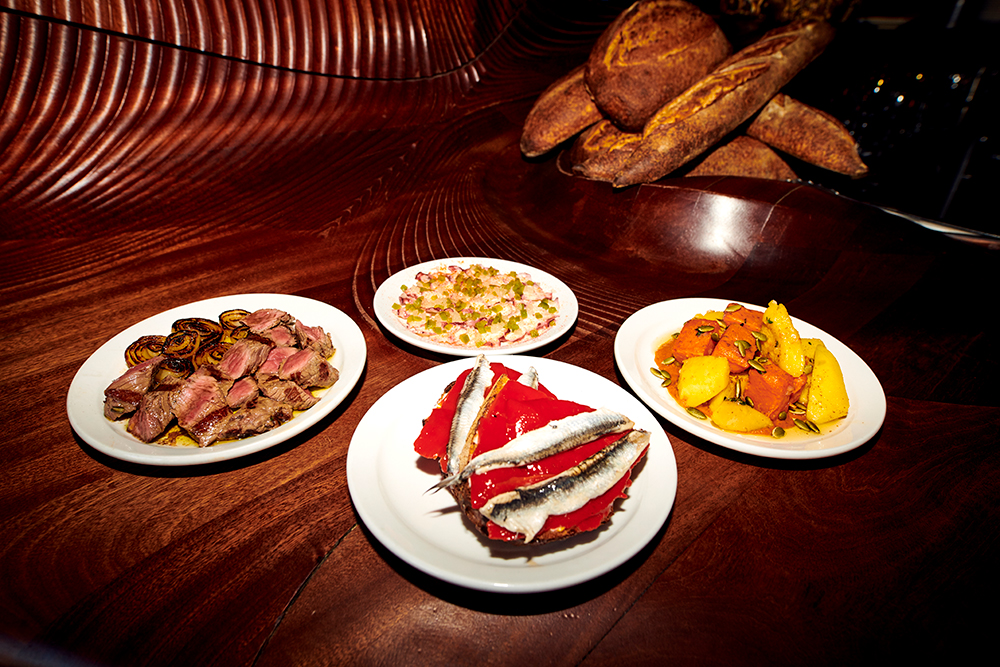
He tells me his life feels like a game of Tetris, and he’s at that point in the stack when you’ve been doing so well, but it’s just getting a little too quick, and the pieces keep coming and coming. “Every day you try to get to a new level,” he says. “That beauty when all of those pieces fit together and you crush ten lines — that’ll be a really good feeling.” He knows he can’t sustain this forever, that soon he’s going to have to take a break. “You’re at a point like, if you ever stop, you’re completely fucked.”
When I ask what pisses him off the most, he says inefficiency. Until last year, his Mercedes SUV was covered in bread crumbs because he was still the one delivering bread to all his restaurants every day at 7:30 a.m. His wife tells him to be more realistic, that he can’t expect that other people don’t have an off switch the way he doesn’t have an off switch. The entire surface of his bedside table holds a pyramid of crumpled receipts. He doesn’t believe in God because he doesn’t have time to think about it.
His friends know he is tired, though they can’t tell just by looking at him; he somehow still looks about 25. They know because he’s the first guy to send out texts in the morning and long after his business partner, Rimaldi, has gone to bed. His way of coping is to dig in deeper. “We all have a little bit of dysfunction in us,” Rimaldi says. “He’s a workaholic.” Rimaldi says he remembers one day a couple of years ago when he invited van Gameren to go out for lunch, and he said he didn’t have the time. It left his partner wondering, “What’s the point of having all this success if you can’t even go out for lunch?”
•••
Van Gameren decided to buy the house in the County the same way he makes most decisions: inspiration came rushing at him and he grabbed hold, watching it spin into something bigger and bigger until he was taking out a second mortgage on his house without telling his wife, and buying a six-acre waterfront property and monster estate home called Cressy House. The way the builder approached the house really spoke to him, he offers up as an explanation now. “It’s the same way I tackle projects. Why do one fireplace when you can do ten?” Why indeed. Soon after, his idea machine began to churn. His catering company could do weddings on the property. They could do bachelorette weekends, wine tastings, private dinners. The only thing he’d need was more time. He began to get the place ready, furnishing it with curated books and blankets and armchairs and rugs. He drives up and back in a day, a four-hour round trip, to clean toilets and make beds himself. “I haven’t found a cleaner that I trust,” he says.
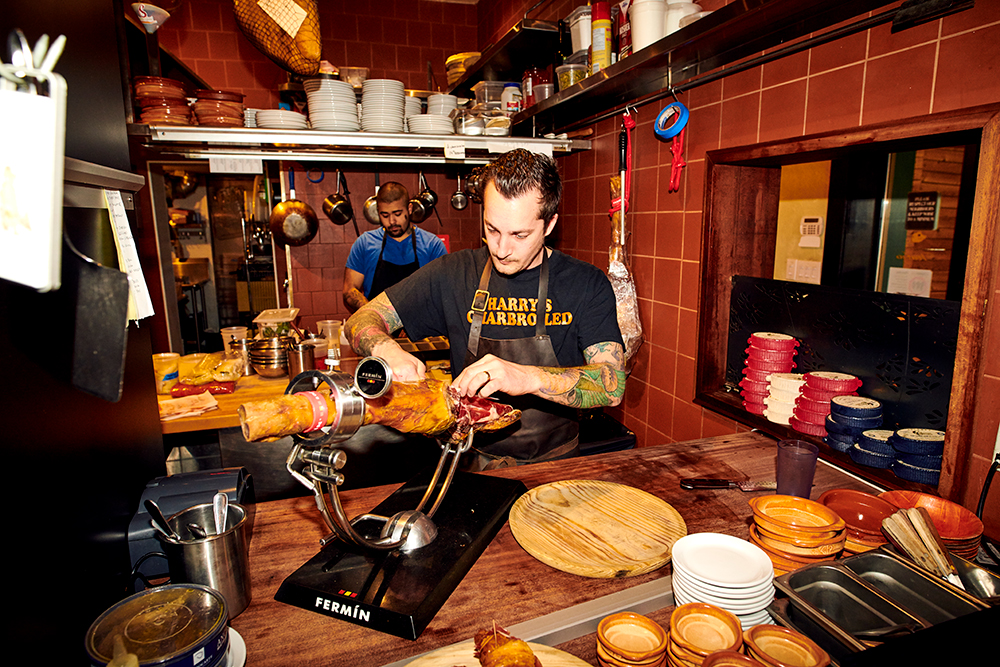
The last week of January, he took Sunny and Wylie up to Cressy House for a few days. He’s learning how to relax, a day off here and there when he’s not crunching out emails in front of the fireplace(s). It had snowed the day before they arrived, and it occurred to him to buy an e-book on how to build an igloo. “I read half a chapter and just started building,” he says. It took 80 blocks of compressed snow over four days. He hacked the blocks himself, and pressed the snow down until it was firm enough to hold. Two days later, the staff of Pretty Ugly arrived for their annual party, and they got roped into helping too, using wheelbarrows to haul the blocks of snow their boss had cut. On the last day, Sunny and Wylie pitched in on the project, his wife towing snow and their bundled infant behind her in a sled. For a while, they left the baby in the igloo, before van Gameren got nervous about its structural stability and they decided they’d better move him before it all caved in.
Near the end of the fourth day, someone went down to the water and carried a sheet of ice back up to the igloo, by now standing at ten feet wide and eight feet tall. Someone else mixed negronis, arranging them on a sheet of plywood for maximum Instagram likes. But van Gameren was listless. He couldn’t get the dome’s geometry to work. “I had these dreams of setting a fire and trying to sleep in it.” He never did figure out how to get the roof on. “Typical Grant, build it and don’t enjoy it,” he says. “It’s probably melted by now.”
